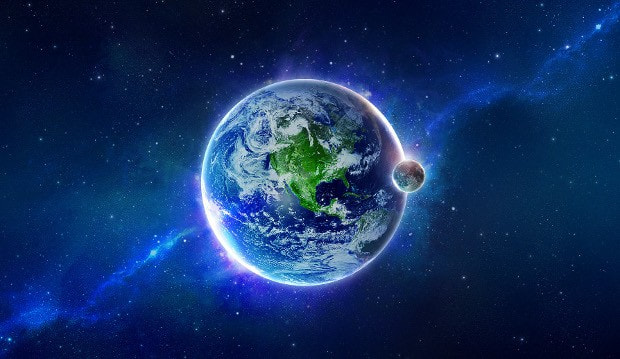
IELTS General Training Volume 5
- Published on: 30 Apr 2018
- Tests taken: 442,104
Answer Keys:
Part 1: Question 1 - 13
- 1 H
- 2 G
- 3 A
- 4 F
- 5 C
- 6 D
- 7 E
- 8 B
- 9 Mercury
- 10 Reflects light
- 11 Species
- 12 The Orion Arm
- 13 dark
- 1 H
- 2 G
- 3 A
- 4 F
- 5 C
- 6 D
- 7 E
- 8 B
- 9 Mercury
- 10 Reflects light
- 11 Species
- 12 The Orion Arm
- 13 dark
Part 2: Question 14 - 28
- 14 C
- 15 A
- 16 C
- 17 D
- 18 B
- 19 C
- 20 C
- 21 B
- 22 A
- 23 TRUE
- 24 TRUE
- 25 FALSE
- 26 TRUE
- 27 NOT GIVEN
- 28 TRUE
- 14 C
- 15 A
- 16 C
- 17 D
- 18 B
- 19 C
- 20 C
- 21 B
- 22 A
- 23 TRUE
- 24 TRUE
- 25 FALSE
- 26 TRUE
- 27 NOT GIVEN
- 28 TRUE
Part 3: Question 29 - 40
- 29 one-story houses
- 30 plans
- 31 map
- 32 emergency exits
- 33 doorknob
- 34 pours
- 35 TRUE
- 36 NOT GIVEN
- 37 FALSE
- 38 TRUE
- 39 TRUE
- 40 B
- 29 one-story houses
- 30 plans
- 31 map
- 32 emergency exits
- 33 doorknob
- 34 pours
- 35 TRUE
- 36 NOT GIVEN
- 37 FALSE
- 38 TRUE
- 39 TRUE
- 40 B
Review & Explanations:
Questions 1-8
Reading Passage 1 has eight paragraphs A-H. Which paragraph contains the following information? Write the correct letter, A–H, in boxes 1–8 on your answer sheet.
1 Earth’s natural satellite
2 Distance between Earth and Sun
3 General information about Earth
4 The Solar System
5 Length of most months
6 Another name for Earth
7 The living part of the Earth's surface
8 The movements of Earth around the Sun
- 1 Answer: H
Keywords in Questions
Similar words in Passage
Q1: Earth’s natural satellite
The Moon goes around the Earth at an average distance of 400,000 kilometers (250,000 mi). It is locked to Earth
Note: The keyword of Q1 is Earth’s natural satellite so we look for the information in the passage.After skimming, we can notice that paragraph H mentions that. We should remember that The Moon is similar to natural and goes around, is locked to Earth is similar to satellite.
Therefore, the answer for Q1 is H
- 2 Answer: G
Keywords in Questions
Similar words in Passage
Q2:. Distance between Earth and Sun
The Earth is generally 150,000,000 kilometers or 93,000,000 miles away from the Sun
Note: Considering every details in the question and in the passage, we can see that paragraph G contains the information of question 2. In details, miles away from the Sun is similar to Distance.
For that reason, the answer is G.
- 3 Answer: A
Keywords in Questions
Similar words in Passage
Q3: General information about Earth
The Earth is the third planet from the Sun and it is the only planet known to have life on it
Note Considering every details in the question and in the passage, we can conclude that Q3 is confirmed in paragraph A.
For that reason, the answer is A
- 4 Answer: F
Keywords in Questions
Similar words in Passage
Q4:The Solar System
The Solar System is moving through the Orion Arm of the Milky Way Galaxy now, and will be for about the next 10,000 years
Note: Considering every details in the question and in the passage, we can conclude that Q4 is confirmed in paragraph F.
For that reason, the answer is F
- 5 Answer: C
Keywords in Questions
Similar words in Passage
Q5: Length of most months
That is where the idea of "month" came from. However, now most months have 30 or 31 days so they fit into one year.
Note: Considering every details in the question and in the passage, we can conclude that Q5 is confirmed in the passage C. The information “most months have 30 or 31 days so they fit into one year” has same mean with Length of most months.
For that reason, the answer is C.
- 6 Answer: D
- 7 Answer: E
Keywords in Questions
Similar words in Passage
Q7: The living part of the Earth's surface
The things that live on Earth have changed its surface greatly
Note Considering every details in the question and in the passage, we can conclude that Q6 is confirmed in the passage E. The detail ‘The things that live’ is similar to The living part.
For that reason, the answer is E
- 8 Answer: B
Keywords in Questions
Similar words in Passage
Q8. The movements of Earth around the Sun
The large mass of the Sun makes the Earth move around it.
Note Considering every details in the question and in the passage, we can conclude that Q6 is confirmed in the passage B
For that reason, the answer is B
Questions 9-13
Complete the sentences below.
Choose NO MORE THAN THREE WORDS from the text for each answer.
Write your answers in boxes 9-13 on your answer sheet.
Apart from Earth, other rocky planets in our Solar Systems are Venus, Mars and 9 .
Moon 10 from the Sun on Earth.
There are millions of 11 of plants and animals that inhabit Earth.
Now the Solar System is travelling through 12 .
The 13 side of the Moon is the side, which never faces Earth.
- 9 Answer: Mercury
Keywords in Questions
Similar words in Passage
Q9. Apart from Earth, other rocky planets in our Solar Systems are Venus, Mars and______
It is one of four rocky planets on the inside of the Solar System. The other three are Mercury, Venus, and Mars.
Note
The keywords in this question is other rocky planets. From the question, we can assume that the answer must be a noun. We should notice four rocky planets is similar to other rocky planets and the missing planet is Mercury. Therefore, the answer for Q9 is Mercury
- 10 Answer: Reflects light
Keywords in Questions
Similar words in Passage
Q10 Moon _______from the Sun on Earth.
The Moon goes around the Earth about every 27⅓ days, and reflects light from the Sun
Note
From the question, we can assume that the answer must be a verb. Considering every details in the question and in the passage, we can conclude that reflects light is matched with the missing phrase in question.
Therefore, the answer for Q10 is reflects light
- 11 Answer: Species
Keywords in Questions
Similar words in Passage
Q11. There are millions of ______ of plants and animals that inhabit Earth.
Because of its water, the Earth is home to millions of species of plants and animals.
Note From the question, we can assume that the answer must be a noun. Considering every details in the question and in the passage, we can conclude that species is matched with the missing phrase in Q11.
Therefore, the answer for Q11 is species.
- 12 Answer: The Orion Arm
Keywords in Questions
Similar words in Passage
Q12. Now the Solar System is travelling through ______
The Solar System is moving through the Orion Arm of the Milky Way Galaxy now, and will be for about the next 10,000 years.
Note
The keywords in this question is the Solar System. From the question, we can assume that the answer must be a noun. We should notice moving through is similar to travelling through.
Therefore, the answer for Q12 is the Orion Arm
- 13 Answer: dark
Keywords in Questions
Similar words in Passage
Q13. The ____ side of the Moon is the side, which never faces Earth.
so that it always has the same half facing the Earth; the other half is called the "dark side of the Moon"
Note
The keywords in this question is never faces Earth..From the question, we can assume that the answer must be a adjective. We should notice always has the same half facing the Earth is similar to dark side.
Therefore, the answer is dark
Reading Passage 1
Read the text below and answer Questions 1-13

The Earth
A The Earth is the third planet from the Sun and it is the only planet known to have life on it. The Earth formed around 4.5 billion years ago. It is one of four rocky planets on the inside of the Solar System. The other three are Mercury, Venus, and Mars.
B The large mass of the Sun makes the Earth move around it, just as the mass of the Earth makes the Moon move around it. The Earth also turns round in space, so different parts face the Sun at different times. The Earth goes around the Sun once (one "year") for every 365¼ times it turns all the way around (one "day").
C The Moon goes around the Earth about every 27⅓ days, and reflects light from the Sun. As the Earth goes round the Sun at the same time, the changing light of the Moon takes about 29½ days to go from dark to bright to dark again. That is where the idea of "month" came from. However, now most months have 30 or 31 days so they fit into one year.
D The Earth is the only planet in our Solar System that has a large amount of liquid water. About 71% of the surface of the Earth is covered by oceans. Because of this, it is sometimes called the "Blue Planet".
E Because of its water, the Earth is home to millions of species of plants and animals. The things that live on Earth have changed its surface greatly. For example, early cyanobacteria changed the air and gave it oxygen. The living part of the Earth's surface is called the "biosphere".
F The Earth is part of the eight planets and many thousands of small bodies that move around the Sun as its Solar System. The Solar System is moving through the Orion Arm of the Milky Way Galaxy now, and will be for about the next 10,000 years.
G The Earth is generally 150,000,000 kilometers or 93,000,000 miles away from the Sun (this distance is named an "Astronomical Unit"). The Earth moves along its way at an average speed of about 30 km or 19 mi a second. The Earth turns all the way around about 365¼ times in the time it takes for the Earth to go all the way around the Sun. To make up this extra bit of a day every year, an additional day is used every four years. This is named a "leap year".
H The Moon goes around the Earth at an average distance of 400,000 kilometers (250,000 mi). It is locked to Earth, so that it always has the same half facing the Earth; the other half is called the "dark side of the Moon". It takes about 27⅓ days for the Moon to go all the way around the Earth but, because the Earth is moving around the Sun at the same time, it takes about 29½ days for the Moon to go from dark to bright to dark again. This is where the word "month" came from, even though most months now have 30 or 31 days.










